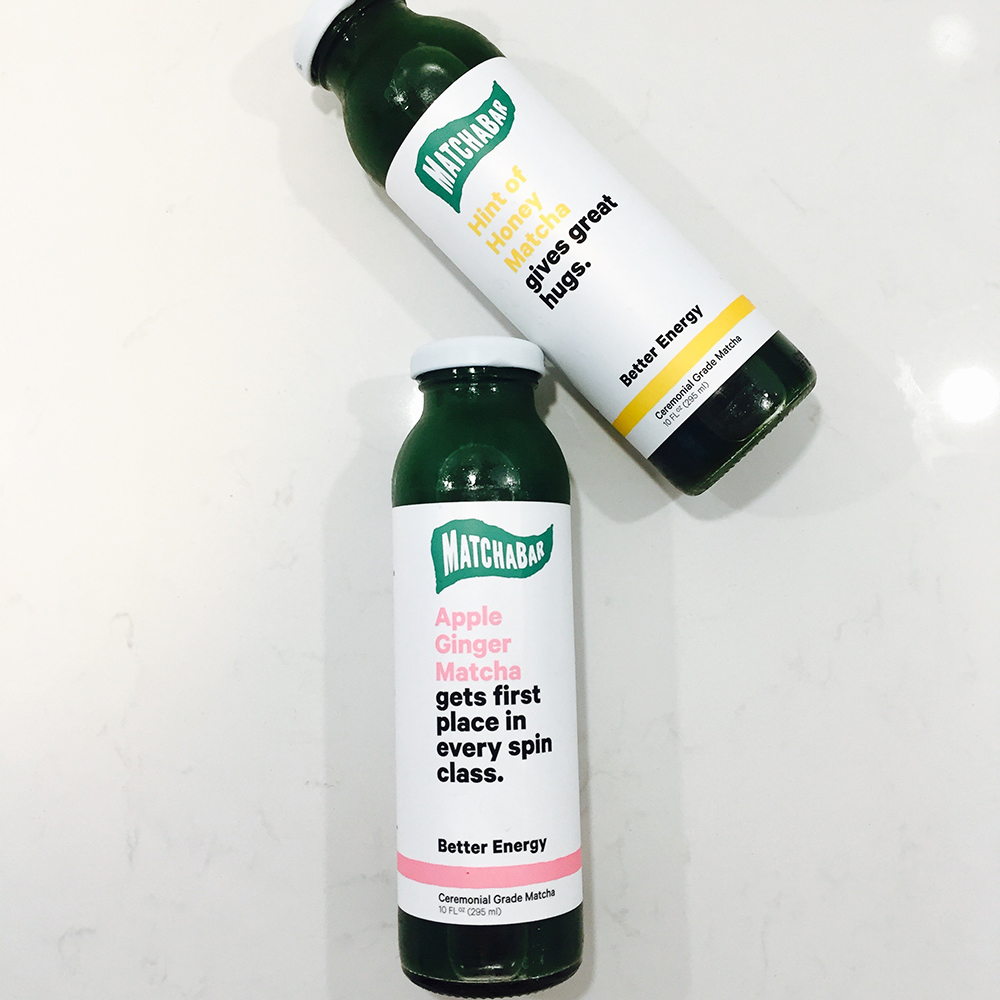


This year let alone the rise of matcha has been overwhelming. Matcha has been around for centuries in Japanese culture. What’s the difference between matcha and green tea? The tip of the plant; it all has to do with the baby leaves that spout while the plant is being shaded. Shade growing is essential to how the plant is harvested for matcha. The plant is then deprived of sunlight; effectively tricking the plant to essentially think it’s dying, thus causing the plant to work harder to survive. It’s through this process that the chlorophyll content skyrockets, along with its antioxidant, caffeine, and nutrient content (including L-Theanine, the most common amino acid in matcha).
Here in Brooklyn, New York a company called MatchaBar (founded by two brothers Max and Graham Fortgang) has created matcha products that are a bit more innovative than most. These two brothers were complete caffeine addicts and wanted to put an end to the cycle of consuming energy drinks and a ton of coffee. They later ventured to a local tea retailer in the lower east side of Manhattan, tried matcha for the first time, and was blown away by how clean and focused they felt from matcha’s caffeine/energy. MatchaBar uses their own ceremonial grade matcha that’s directly sourced from an independent family farm in Nisho, Japan. The team even goes there every May for harvesting season (literally making it farm to bottle). Not only can you find MatchaBar bottled products in local retailers like Whole Foods and other independent health stores (nation wide) but they also have their own café in Chelsea, New York and Silverlake, Los Angeles. What makes their matcha stand out besides how it’s sustainably sourced? They use fun ingredients like apple and ginger juices to give an extra boost. Sometimes you’ll find a hint of honey or maybe some mint thrown in there too. However, at their café’s you can find matcha lemonade, and a various amount other matcha goodies- including a vegan matcha milkshake!
今年に入り、抹茶ブームの勢いが止まりません。抹茶は日本文化に何世紀にも渡り根づいています。抹茶と緑茶の違いは何でしょう?植物の先端;そのお茶は、日光を遮断してできたベビーリーフです。抹茶を栽培するのに、日光を浴びずに育てる事は不可欠です。植物は、日光を奪われると騙して死んでいくと本質的に思ってしまい、生き残ろうと働き出します。このプロセスを通して、葉緑素含有量は、抗酸化物質、カフェイン、栄養成分(抹茶中で最も一般的なアミノ酸であるL-テアニンを含む)とともに上昇します。
ここニューヨークのブルックリンにあるショップ、MatchaBar(2人の兄弟MaxとGraham Fortgang)は、革新的な抹茶商品をプロデュースしています。この二人の兄弟は、以前、完全にカフェイン中毒で、栄養ドリンクとコーヒを過剰摂取する生活から抜け出したかったのです。その後、マンハッタン東側にある、地元のお茶屋さんで、初めて抹茶を試したところ、如何に混じりけのないそのカフェインとエネルギーに圧倒されました。MatchaBarは、日本の西尾市にある抹茶農家から、儀式用の抹茶を直接取り入れて使用しています。彼ら自身、毎年5月の収穫時期には現地に出向いています(茶畑から直接ボトル商品への生産)。MachaBarボトル商品は、Whole Foodsのような地元の小売業者だけでなく、独立したヘルシーストア(全国規模)でも販売され、ニューヨークのチェルシーと、ロサンゼルスのシルバーレークに、彼ら自身のカフェもあります。彼らの抹茶は、どのようにしてサステイナブルな資源を供給しているのか?彼らは、林檎、生姜ジュースといった面白い食材ショットも取り入れています。時々、そこに蜂蜜やミントが投入されていることもわかるでしょう。更に、彼らのカフェに行けば、抹茶レモネードや色々な種類の美味しい抹茶メニューが見つかるでしょう-ビーガン用の抹茶ミルクシェイクもありますよ!